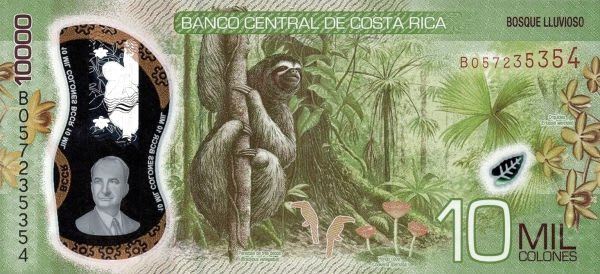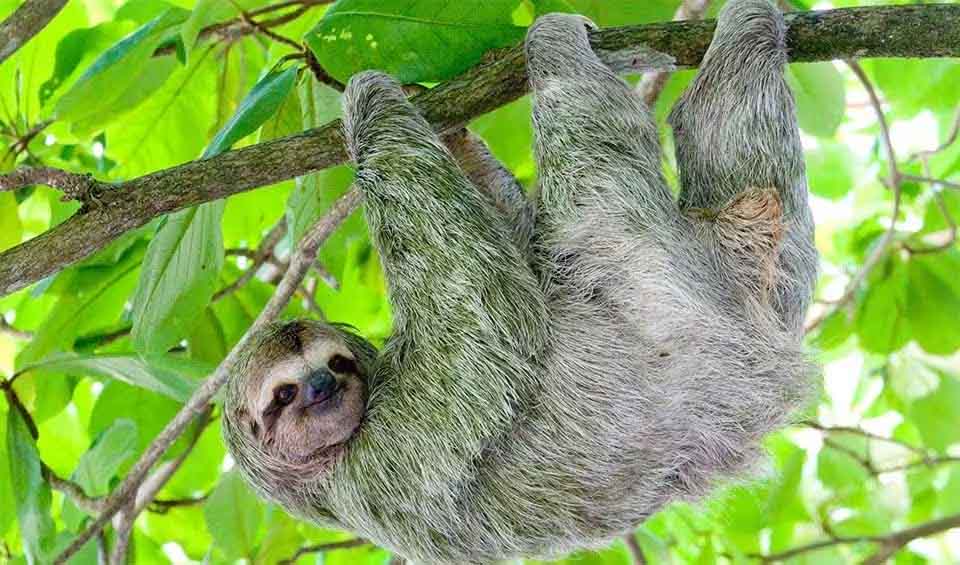Adorned with a dense brown coat, these creatures often host algae within their fur, which lends them a greenish hue. This natural camouflage plays a crucial role in their survival, allowing them to blend seamlessly with the verdant foliage of the rainforest canopy and evade the notice of predators.
Each limb of the Brown-throated sloth is equipped with three distinctive claws, a characteristic feature that aids in their expert navigation through the treetops. Beyond their clawed appendages, these sloths possess a remarkably unique vertebral arrangement, granting them the ability to rotate their heads up to 270 degrees.
After giving birth, a mother sloth takes immediate action to ensure her infant’s safety by pulling the newborn between her hind legs, a behavior that prevents the vulnerable infant from falling. Remarkably, other sloths may assist the mother and her baby, helping to clean them—a rare example of social cooperation among these typically solitary animals. Unlike the females, male Brown-throated sloths do not participate in the upbringing of their offspring. The responsibility of teaching the young sloths the essential skills for survival, including foraging and navigating the forest canopy, falls solely to the females.
Brown-throated sloths exhibit two distinct sleeping behaviors, which further underscore their unique adaptation to their environment. The “awake-alert” state involves the sloth keeping its eyes open and blinking, while in “behavioral sleep,” the sloth closes its eyes but remains hanging from the tree. These behaviors likely serve to conserve energy while maintaining some level of alertness to potential threats.
Distribution
 Argentina
Argentina Bolivia
Bolivia Brazil
Brazil Colombia
Colombia Costa Rica
Costa Rica Ecuador
Ecuador Honduras
Honduras Nicaragua
Nicaragua Panama
Panama Peru
Peru Venezuela
VenezuelaAnything we've missed?
Help us improve this page by suggesting edits. Glory never dies!
Suggest an editGet to know me
Terrestrial / Aquatic
Altricial / Precocial
Polygamous / Monogamous
Dimorphic (size) / Monomorphic
Active: Diurnal / Nocturnal
Social behavior: Solitary / Pack / Herd
Diet: Carnivore / Herbivore / Omnivore / Piscivorous / Insectivore
Migratory: Yes / No
Domesticated: Yes / No
Dangerous: Yes / No
Brown-throated sloth on banknotes








